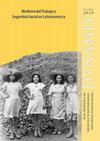Professional dominance? Encounters between physicians and patients in the first half of the 19th century under the Habsburg Monarchy
IF 0.1
4区 哲学
Q3 HISTORY & PHILOSOPHY OF SCIENCE
引用次数: 1
Abstract
In Vienna, the tradition of clinical teaching began with Anton de Haen’s introduction of the newly established educational approach in the Buergerspital in 1754. In the second half of the 18th century, clinical teaching at medical faculties contributed to the shift of power relationships between doctors and patients. The medical gaze that the doctor and the patient directed towards each other regulated the patients’ as well as the physicians’ behavior in the setting of hospital medicine, but this does not mean that a wholesale transformation of the medical field took place. Patients were not mere passive objects of externally controlled processes but influential agents of medical process. Middle- and upper-class patients sought assistance from their family general practitioners even at the beginning of the 20th century, and the relationships between these family doctors and their patients were more equal. Up to the end of the 19th century, physician-patient contact often comprised traditional methods of consultation by letter, and physicians saw and treated their patients predominantly in the patient’s homes. A doctor’s medical authority was not solely based on his knowledge, skills, and reputation among colleagues at the medical faculty. As in the early modern tradition of doctor-patient encounters, patients continued to play the role of ultimate arbiter of the performativity of physicians.专业优势?19世纪上半叶哈布斯堡王朝时期医生和病人之间的接触
在维也纳,临床教学的传统始于安东·德·海恩(Anton de Haen)于1754年在伯格医院(Buergerspital)引入的新建立的教育方法。18世纪下半叶,医学院的临床教学促成了医患之间权力关系的转变。在医院医学的背景下,医生和病人对彼此的医疗凝视规范了病人和医生的行为,但这并不意味着医疗领域发生了大规模的转变。患者不再是外界控制过程的被动客体,而是医疗过程的影响主体。早在20世纪初,中上层社会的患者就开始向家庭全科医生寻求帮助,家庭医生与患者之间的关系更加平等。直到19世纪末,医患接触通常包括传统的写信咨询方式,医生主要在病人家里看病和治疗。医生的医学权威不仅仅是基于他的知识、技能和在医学院同事中的声誉。在早期的现代医患接触传统中,患者继续扮演着医生表现的最终仲裁者的角色。
本文章由计算机程序翻译,如有差异,请以英文原文为准。
求助全文
约1分钟内获得全文
求助全文
来源期刊

Dynamis
社会科学-科学史与科学哲学
CiteScore
0.30
自引率
0.00%
发文量
0
审稿时长
>12 weeks
期刊介绍:
DYNAMIS is an international journal devoted to the history of medicine, health and science, founded in 1981, that pays special attention to novel and interdisciplinary historiographic perspectives. It offers original, double peer-reviewed research studies (articles, notes or documents) and reviews in languages of the European Union.
 求助内容:
求助内容: 应助结果提醒方式:
应助结果提醒方式:


